-
EXECUTIVE SUMMARY
-
Market Overview
-
Key Findings
-
Market Segmentation
-
Competitive Landscape
-
Challenges and Opportunities
-
Future Outlook
-
MARKET INTRODUCTION
-
Definition
-
Scope of the study
-
Research Objective
-
Assumption
-
Limitations
-
RESEARCH METHODOLOGY
-
Overview
-
Data Mining
-
Secondary Research
-
Primary Research
-
Primary Interviews and Information Gathering Process
-
Breakdown of Primary Respondents
-
Forecasting Model
-
Market Size Estimation
-
Bottom-Up Approach
-
Top-Down Approach
-
Data Triangulation
-
Validation
-
MARKET DYNAMICS
-
Overview
-
Drivers
-
Restraints
-
Opportunities
-
MARKET FACTOR ANALYSIS
-
Value chain Analysis
-
Porter's Five Forces Analysis
-
Bargaining Power of Suppliers
-
Bargaining Power of Buyers
-
Threat of New Entrants
-
Threat of Substitutes
-
Intensity of Rivalry
-
COVID-19 Impact Analysis
-
Market Impact Analysis
-
Regional Impact
-
Opportunity and Threat Analysis
-
Flexible Plastic Packaging Market, BY Application (USD Billion)
-
Food Beverage
-
Pharmaceutical
-
Personal Care
-
Household Products
-
Flexible Plastic Packaging Market, BY Packaging Type (USD Billion)
-
Bags
-
Pouches
-
Films
-
Sheets
-
Flexible Plastic Packaging Market, BY Material Type (USD Billion)
-
Polyethylene
-
Polypropylene
-
Polyvinyl Chloride
-
Polyethylene Terephthalate
-
Flexible Plastic Packaging Market, BY End Use (USD Billion)
-
Retail
-
Industrial
-
Food Service
-
Flexible Plastic Packaging Market, BY Regional (USD Billion)
-
North America
-
US
-
Canada
-
Europe
-
Germany
-
UK
-
France
-
Russia
-
Italy
-
Spain
-
Rest of Europe
-
APAC
-
China
-
India
-
Japan
-
South Korea
-
Malaysia
-
Thailand
-
Indonesia
-
Rest of APAC
-
South America
-
Brazil
-
Mexico
-
Argentina
-
Rest of South America
-
MEA
-
GCC Countries
-
South Africa
-
Rest of MEA
-
Competitive Landscape
-
Overview
-
Competitive Analysis
-
Market share Analysis
-
Major Growth Strategy in the Flexible Plastic Packaging Market
-
Competitive Benchmarking
-
Leading Players in Terms of Number of Developments in the Flexible Plastic Packaging Market
-
Key developments and growth strategies
-
New Product Launch/Service Deployment
-
Merger Acquisitions
-
Joint Ventures
-
Major Players Financial Matrix
-
Sales and Operating Income
-
Major Players RD Expenditure. 2023
-
Company Profiles
-
Amcor
-
Financial Overview
-
Products Offered
-
Key Developments
-
SWOT Analysis
-
Key Strategies
-
Kraft Heinz
-
Financial Overview
-
Products Offered
-
Key Developments
-
SWOT Analysis
-
Key Strategies
-
Proampac
-
Financial Overview
-
Products Offered
-
Key Developments
-
SWOT Analysis
-
Key Strategies
-
Clondalkin Group
-
Financial Overview
-
Products Offered
-
Key Developments
-
SWOT Analysis
-
Key Strategies
-
Constantia Flexibles
-
Financial Overview
-
Products Offered
-
Key Developments
-
SWOT Analysis
-
Key Strategies
-
Berry Global
-
Financial Overview
-
Products Offered
-
Key Developments
-
SWOT Analysis
-
Key Strategies
-
Sealed Air
-
Financial Overview
-
Products Offered
-
Key Developments
-
SWOT Analysis
-
Key Strategies
-
Coveris
-
Financial Overview
-
Products Offered
-
Key Developments
-
SWOT Analysis
-
Key Strategies
-
Huhtamaki
-
Financial Overview
-
Products Offered
-
Key Developments
-
SWOT Analysis
-
Key Strategies
-
Polytarp Products
-
Financial Overview
-
Products Offered
-
Key Developments
-
SWOT Analysis
-
Key Strategies
-
Sappi
-
Financial Overview
-
Products Offered
-
Key Developments
-
SWOT Analysis
-
Key Strategies
-
Glenroy
-
Financial Overview
-
Products Offered
-
Key Developments
-
SWOT Analysis
-
Key Strategies
-
Innovative Packaging
-
Financial Overview
-
Products Offered
-
Key Developments
-
SWOT Analysis
-
Key Strategies
-
Bischof + Klein
-
Financial Overview
-
Products Offered
-
Key Developments
-
SWOT Analysis
-
Key Strategies
-
Mondi
-
Financial Overview
-
Products Offered
-
Key Developments
-
SWOT Analysis
-
Key Strategies
-
Appendix
-
References
-
Related Reports
-
LIST Of tables
-
LIST OF ASSUMPTIONS
-
North America Flexible Plastic Packaging Market SIZE ESTIMATES & FORECAST, BY APPLICATION, 2019-2035 (USD Billions)
-
North America Flexible Plastic Packaging Market SIZE ESTIMATES & FORECAST, BY PACKAGING TYPE, 2019-2035 (USD Billions)
-
North America Flexible Plastic Packaging Market SIZE ESTIMATES & FORECAST, BY MATERIAL TYPE, 2019-2035 (USD Billions)
-
North America Flexible Plastic Packaging Market SIZE ESTIMATES & FORECAST, BY END USE, 2019-2035 (USD Billions)
-
North America Flexible Plastic Packaging Market SIZE ESTIMATES & FORECAST, BY REGIONAL, 2019-2035 (USD Billions)
-
US Flexible Plastic Packaging Market SIZE ESTIMATES & FORECAST, BY APPLICATION, 2019-2035 (USD Billions)
-
US Flexible Plastic Packaging Market SIZE ESTIMATES & FORECAST, BY PACKAGING TYPE, 2019-2035 (USD Billions)
-
US Flexible Plastic Packaging Market SIZE ESTIMATES & FORECAST, BY MATERIAL TYPE, 2019-2035 (USD Billions)
-
US Flexible Plastic Packaging Market SIZE ESTIMATES & FORECAST, BY END USE, 2019-2035 (USD Billions)
-
US Flexible Plastic Packaging Market SIZE ESTIMATES & FORECAST, BY REGIONAL, 2019-2035 (USD Billions)
-
Canada Flexible Plastic Packaging Market SIZE ESTIMATES & FORECAST, BY APPLICATION, 2019-2035 (USD Billions)
-
Canada Flexible Plastic Packaging Market SIZE ESTIMATES & FORECAST, BY PACKAGING TYPE, 2019-2035 (USD Billions)
-
Canada Flexible Plastic Packaging Market SIZE ESTIMATES & FORECAST, BY MATERIAL TYPE, 2019-2035 (USD Billions)
-
Canada Flexible Plastic Packaging Market SIZE ESTIMATES & FORECAST, BY END USE, 2019-2035 (USD Billions)
-
Canada Flexible Plastic Packaging Market SIZE ESTIMATES & FORECAST, BY REGIONAL, 2019-2035 (USD Billions)
-
Europe Flexible Plastic Packaging Market SIZE ESTIMATES & FORECAST, BY APPLICATION, 2019-2035 (USD Billions)
-
Europe Flexible Plastic Packaging Market SIZE ESTIMATES & FORECAST, BY PACKAGING TYPE, 2019-2035 (USD Billions)
-
Europe Flexible Plastic Packaging Market SIZE ESTIMATES & FORECAST, BY MATERIAL TYPE, 2019-2035 (USD Billions)
-
Europe Flexible Plastic Packaging Market SIZE ESTIMATES & FORECAST, BY END USE, 2019-2035 (USD Billions)
-
Europe Flexible Plastic Packaging Market SIZE ESTIMATES & FORECAST, BY REGIONAL, 2019-2035 (USD Billions)
-
Germany Flexible Plastic Packaging Market SIZE ESTIMATES & FORECAST, BY APPLICATION, 2019-2035 (USD Billions)
-
Germany Flexible Plastic Packaging Market SIZE ESTIMATES & FORECAST, BY PACKAGING TYPE, 2019-2035 (USD Billions)
-
Germany Flexible Plastic Packaging Market SIZE ESTIMATES & FORECAST, BY MATERIAL TYPE, 2019-2035 (USD Billions)
-
Germany Flexible Plastic Packaging Market SIZE ESTIMATES & FORECAST, BY END USE, 2019-2035 (USD Billions)
-
Germany Flexible Plastic Packaging Market SIZE ESTIMATES & FORECAST, BY REGIONAL, 2019-2035 (USD Billions)
-
UK Flexible Plastic Packaging Market SIZE ESTIMATES & FORECAST, BY APPLICATION, 2019-2035 (USD Billions)
-
UK Flexible Plastic Packaging Market SIZE ESTIMATES & FORECAST, BY PACKAGING TYPE, 2019-2035 (USD Billions)
-
UK Flexible Plastic Packaging Market SIZE ESTIMATES & FORECAST, BY MATERIAL TYPE, 2019-2035 (USD Billions)
-
UK Flexible Plastic Packaging Market SIZE ESTIMATES & FORECAST, BY END USE, 2019-2035 (USD Billions)
-
UK Flexible Plastic Packaging Market SIZE ESTIMATES & FORECAST, BY REGIONAL, 2019-2035 (USD Billions)
-
France Flexible Plastic Packaging Market SIZE ESTIMATES & FORECAST, BY APPLICATION, 2019-2035 (USD Billions)
-
France Flexible Plastic Packaging Market SIZE ESTIMATES & FORECAST, BY PACKAGING TYPE, 2019-2035 (USD Billions)
-
France Flexible Plastic Packaging Market SIZE ESTIMATES & FORECAST, BY MATERIAL TYPE, 2019-2035 (USD Billions)
-
France Flexible Plastic Packaging Market SIZE ESTIMATES & FORECAST, BY END USE, 2019-2035 (USD Billions)
-
France Flexible Plastic Packaging Market SIZE ESTIMATES & FORECAST, BY REGIONAL, 2019-2035 (USD Billions)
-
Russia Flexible Plastic Packaging Market SIZE ESTIMATES & FORECAST, BY APPLICATION, 2019-2035 (USD Billions)
-
Russia Flexible Plastic Packaging Market SIZE ESTIMATES & FORECAST, BY PACKAGING TYPE, 2019-2035 (USD Billions)
-
Russia Flexible Plastic Packaging Market SIZE ESTIMATES & FORECAST, BY MATERIAL TYPE, 2019-2035 (USD Billions)
-
Russia Flexible Plastic Packaging Market SIZE ESTIMATES & FORECAST, BY END USE, 2019-2035 (USD Billions)
-
Russia Flexible Plastic Packaging Market SIZE ESTIMATES & FORECAST, BY REGIONAL, 2019-2035 (USD Billions)
-
Italy Flexible Plastic Packaging Market SIZE ESTIMATES & FORECAST, BY APPLICATION, 2019-2035 (USD Billions)
-
Italy Flexible Plastic Packaging Market SIZE ESTIMATES & FORECAST, BY PACKAGING TYPE, 2019-2035 (USD Billions)
-
Italy Flexible Plastic Packaging Market SIZE ESTIMATES & FORECAST, BY MATERIAL TYPE, 2019-2035 (USD Billions)
-
Italy Flexible Plastic Packaging Market SIZE ESTIMATES & FORECAST, BY END USE, 2019-2035 (USD Billions)
-
Italy Flexible Plastic Packaging Market SIZE ESTIMATES & FORECAST, BY REGIONAL, 2019-2035 (USD Billions)
-
Spain Flexible Plastic Packaging Market SIZE ESTIMATES & FORECAST, BY APPLICATION, 2019-2035 (USD Billions)
-
Spain Flexible Plastic Packaging Market SIZE ESTIMATES & FORECAST, BY PACKAGING TYPE, 2019-2035 (USD Billions)
-
Spain Flexible Plastic Packaging Market SIZE ESTIMATES & FORECAST, BY MATERIAL TYPE, 2019-2035 (USD Billions)
-
Spain Flexible Plastic Packaging Market SIZE ESTIMATES & FORECAST, BY END USE, 2019-2035 (USD Billions)
-
Spain Flexible Plastic Packaging Market SIZE ESTIMATES & FORECAST, BY REGIONAL, 2019-2035 (USD Billions)
-
Rest of Europe Flexible Plastic Packaging Market SIZE ESTIMATES & FORECAST, BY APPLICATION, 2019-2035 (USD Billions)
-
Rest of Europe Flexible Plastic Packaging Market SIZE ESTIMATES & FORECAST, BY PACKAGING TYPE, 2019-2035 (USD Billions)
-
Rest of Europe Flexible Plastic Packaging Market SIZE ESTIMATES & FORECAST, BY MATERIAL TYPE, 2019-2035 (USD Billions)
-
Rest of Europe Flexible Plastic Packaging Market SIZE ESTIMATES & FORECAST, BY END USE, 2019-2035 (USD Billions)
-
Rest of Europe Flexible Plastic Packaging Market SIZE ESTIMATES & FORECAST, BY REGIONAL, 2019-2035 (USD Billions)
-
APAC Flexible Plastic Packaging Market SIZE ESTIMATES & FORECAST, BY APPLICATION, 2019-2035 (USD Billions)
-
APAC Flexible Plastic Packaging Market SIZE ESTIMATES & FORECAST, BY PACKAGING TYPE, 2019-2035 (USD Billions)
-
APAC Flexible Plastic Packaging Market SIZE ESTIMATES & FORECAST, BY MATERIAL TYPE, 2019-2035 (USD Billions)
-
APAC Flexible Plastic Packaging Market SIZE ESTIMATES & FORECAST, BY END USE, 2019-2035 (USD Billions)
-
APAC Flexible Plastic Packaging Market SIZE ESTIMATES & FORECAST, BY REGIONAL, 2019-2035 (USD Billions)
-
China Flexible Plastic Packaging Market SIZE ESTIMATES & FORECAST, BY APPLICATION, 2019-2035 (USD Billions)
-
China Flexible Plastic Packaging Market SIZE ESTIMATES & FORECAST, BY PACKAGING TYPE, 2019-2035 (USD Billions)
-
China Flexible Plastic Packaging Market SIZE ESTIMATES & FORECAST, BY MATERIAL TYPE, 2019-2035 (USD Billions)
-
China Flexible Plastic Packaging Market SIZE ESTIMATES & FORECAST, BY END USE, 2019-2035 (USD Billions)
-
China Flexible Plastic Packaging Market SIZE ESTIMATES & FORECAST, BY REGIONAL, 2019-2035 (USD Billions)
-
India Flexible Plastic Packaging Market SIZE ESTIMATES & FORECAST, BY APPLICATION, 2019-2035 (USD Billions)
-
India Flexible Plastic Packaging Market SIZE ESTIMATES & FORECAST, BY PACKAGING TYPE, 2019-2035 (USD Billions)
-
India Flexible Plastic Packaging Market SIZE ESTIMATES & FORECAST, BY MATERIAL TYPE, 2019-2035 (USD Billions)
-
India Flexible Plastic Packaging Market SIZE ESTIMATES & FORECAST, BY END USE, 2019-2035 (USD Billions)
-
India Flexible Plastic Packaging Market SIZE ESTIMATES & FORECAST, BY REGIONAL, 2019-2035 (USD Billions)
-
Japan Flexible Plastic Packaging Market SIZE ESTIMATES & FORECAST, BY APPLICATION, 2019-2035 (USD Billions)
-
Japan Flexible Plastic Packaging Market SIZE ESTIMATES & FORECAST, BY PACKAGING TYPE, 2019-2035 (USD Billions)
-
Japan Flexible Plastic Packaging Market SIZE ESTIMATES & FORECAST, BY MATERIAL TYPE, 2019-2035 (USD Billions)
-
Japan Flexible Plastic Packaging Market SIZE ESTIMATES & FORECAST, BY END USE, 2019-2035 (USD Billions)
-
Japan Flexible Plastic Packaging Market SIZE ESTIMATES & FORECAST, BY REGIONAL, 2019-2035 (USD Billions)
-
South Korea Flexible Plastic Packaging Market SIZE ESTIMATES & FORECAST, BY APPLICATION, 2019-2035 (USD Billions)
-
South Korea Flexible Plastic Packaging Market SIZE ESTIMATES & FORECAST, BY PACKAGING TYPE, 2019-2035 (USD Billions)
-
South Korea Flexible Plastic Packaging Market SIZE ESTIMATES & FORECAST, BY MATERIAL TYPE, 2019-2035 (USD Billions)
-
South Korea Flexible Plastic Packaging Market SIZE ESTIMATES & FORECAST, BY END USE, 2019-2035 (USD Billions)
-
South Korea Flexible Plastic Packaging Market SIZE ESTIMATES & FORECAST, BY REGIONAL, 2019-2035 (USD Billions)
-
Malaysia Flexible Plastic Packaging Market SIZE ESTIMATES & FORECAST, BY APPLICATION, 2019-2035 (USD Billions)
-
Malaysia Flexible Plastic Packaging Market SIZE ESTIMATES & FORECAST, BY PACKAGING TYPE, 2019-2035 (USD Billions)
-
Malaysia Flexible Plastic Packaging Market SIZE ESTIMATES & FORECAST, BY MATERIAL TYPE, 2019-2035 (USD Billions)
-
Malaysia Flexible Plastic Packaging Market SIZE ESTIMATES & FORECAST, BY END USE, 2019-2035 (USD Billions)
-
Malaysia Flexible Plastic Packaging Market SIZE ESTIMATES & FORECAST, BY REGIONAL, 2019-2035 (USD Billions)
-
Thailand Flexible Plastic Packaging Market SIZE ESTIMATES & FORECAST, BY APPLICATION, 2019-2035 (USD Billions)
-
Thailand Flexible Plastic Packaging Market SIZE ESTIMATES & FORECAST, BY PACKAGING TYPE, 2019-2035 (USD Billions)
-
Thailand Flexible Plastic Packaging Market SIZE ESTIMATES & FORECAST, BY MATERIAL TYPE, 2019-2035 (USD Billions)
-
Thailand Flexible Plastic Packaging Market SIZE ESTIMATES & FORECAST, BY END USE, 2019-2035 (USD Billions)
-
Thailand Flexible Plastic Packaging Market SIZE ESTIMATES & FORECAST, BY REGIONAL, 2019-2035 (USD Billions)
-
Indonesia Flexible Plastic Packaging Market SIZE ESTIMATES & FORECAST, BY APPLICATION, 2019-2035 (USD Billions)
-
Indonesia Flexible Plastic Packaging Market SIZE ESTIMATES & FORECAST, BY PACKAGING TYPE, 2019-2035 (USD Billions)
-
Indonesia Flexible Plastic Packaging Market SIZE ESTIMATES & FORECAST, BY MATERIAL TYPE, 2019-2035 (USD Billions)
-
Indonesia Flexible Plastic Packaging Market SIZE ESTIMATES & FORECAST, BY END USE, 2019-2035 (USD Billions)
-
Indonesia Flexible Plastic Packaging Market SIZE ESTIMATES & FORECAST, BY REGIONAL, 2019-2035 (USD Billions)
-
Rest of APAC Flexible Plastic Packaging Market SIZE ESTIMATES & FORECAST, BY APPLICATION, 2019-2035 (USD Billions)
-
Rest of APAC Flexible Plastic Packaging Market SIZE ESTIMATES & FORECAST, BY PACKAGING TYPE, 2019-2035 (USD Billions)
-
Rest of APAC Flexible Plastic Packaging Market SIZE ESTIMATES & FORECAST, BY MATERIAL TYPE, 2019-2035 (USD Billions)
-
Rest of APAC Flexible Plastic Packaging Market SIZE ESTIMATES & FORECAST, BY END USE, 2019-2035 (USD Billions)
-
Rest of APAC Flexible Plastic Packaging Market SIZE ESTIMATES & FORECAST, BY REGIONAL, 2019-2035 (USD Billions)
-
South America Flexible Plastic Packaging Market SIZE ESTIMATES & FORECAST, BY APPLICATION, 2019-2035 (USD Billions)
-
South America Flexible Plastic Packaging Market SIZE ESTIMATES & FORECAST, BY PACKAGING TYPE, 2019-2035 (USD Billions)
-
South America Flexible Plastic Packaging Market SIZE ESTIMATES & FORECAST, BY MATERIAL TYPE, 2019-2035 (USD Billions)
-
South America Flexible Plastic Packaging Market SIZE ESTIMATES & FORECAST, BY END USE, 2019-2035 (USD Billions)
-
South America Flexible Plastic Packaging Market SIZE ESTIMATES & FORECAST, BY REGIONAL, 2019-2035 (USD Billions)
-
Brazil Flexible Plastic Packaging Market SIZE ESTIMATES & FORECAST, BY APPLICATION, 2019-2035 (USD Billions)
-
Brazil Flexible Plastic Packaging Market SIZE ESTIMATES & FORECAST, BY PACKAGING TYPE, 2019-2035 (USD Billions)
-
Brazil Flexible Plastic Packaging Market SIZE ESTIMATES & FORECAST, BY MATERIAL TYPE, 2019-2035 (USD Billions)
-
Brazil Flexible Plastic Packaging Market SIZE ESTIMATES & FORECAST, BY END USE, 2019-2035 (USD Billions)
-
Brazil Flexible Plastic Packaging Market SIZE ESTIMATES & FORECAST, BY REGIONAL, 2019-2035 (USD Billions)
-
Mexico Flexible Plastic Packaging Market SIZE ESTIMATES & FORECAST, BY APPLICATION, 2019-2035 (USD Billions)
-
Mexico Flexible Plastic Packaging Market SIZE ESTIMATES & FORECAST, BY PACKAGING TYPE, 2019-2035 (USD Billions)
-
Mexico Flexible Plastic Packaging Market SIZE ESTIMATES & FORECAST, BY MATERIAL TYPE, 2019-2035 (USD Billions)
-
Mexico Flexible Plastic Packaging Market SIZE ESTIMATES & FORECAST, BY END USE, 2019-2035 (USD Billions)
-
Mexico Flexible Plastic Packaging Market SIZE ESTIMATES & FORECAST, BY REGIONAL, 2019-2035 (USD Billions)
-
Argentina Flexible Plastic Packaging Market SIZE ESTIMATES & FORECAST, BY APPLICATION, 2019-2035 (USD Billions)
-
Argentina Flexible Plastic Packaging Market SIZE ESTIMATES & FORECAST, BY PACKAGING TYPE, 2019-2035 (USD Billions)
-
Argentina Flexible Plastic Packaging Market SIZE ESTIMATES & FORECAST, BY MATERIAL TYPE, 2019-2035 (USD Billions)
-
Argentina Flexible Plastic Packaging Market SIZE ESTIMATES & FORECAST, BY END USE, 2019-2035 (USD Billions)
-
Argentina Flexible Plastic Packaging Market SIZE ESTIMATES & FORECAST, BY REGIONAL, 2019-2035 (USD Billions)
-
Rest of South America Flexible Plastic Packaging Market SIZE ESTIMATES & FORECAST, BY APPLICATION, 2019-2035 (USD Billions)
-
Rest of South America Flexible Plastic Packaging Market SIZE ESTIMATES & FORECAST, BY PACKAGING TYPE, 2019-2035 (USD Billions)
-
Rest of South America Flexible Plastic Packaging Market SIZE ESTIMATES & FORECAST, BY MATERIAL TYPE, 2019-2035 (USD Billions)
-
Rest of South America Flexible Plastic Packaging Market SIZE ESTIMATES & FORECAST, BY END USE, 2019-2035 (USD Billions)
-
Rest of South America Flexible Plastic Packaging Market SIZE ESTIMATES & FORECAST, BY REGIONAL, 2019-2035 (USD Billions)
-
MEA Flexible Plastic Packaging Market SIZE ESTIMATES & FORECAST, BY APPLICATION, 2019-2035 (USD Billions)
-
MEA Flexible Plastic Packaging Market SIZE ESTIMATES & FORECAST, BY PACKAGING TYPE, 2019-2035 (USD Billions)
-
MEA Flexible Plastic Packaging Market SIZE ESTIMATES & FORECAST, BY MATERIAL TYPE, 2019-2035 (USD Billions)
-
MEA Flexible Plastic Packaging Market SIZE ESTIMATES & FORECAST, BY END USE, 2019-2035 (USD Billions)
-
MEA Flexible Plastic Packaging Market SIZE ESTIMATES & FORECAST, BY REGIONAL, 2019-2035 (USD Billions)
-
GCC Countries Flexible Plastic Packaging Market SIZE ESTIMATES & FORECAST, BY APPLICATION, 2019-2035 (USD Billions)
-
GCC Countries Flexible Plastic Packaging Market SIZE ESTIMATES & FORECAST, BY PACKAGING TYPE, 2019-2035 (USD Billions)
-
GCC Countries Flexible Plastic Packaging Market SIZE ESTIMATES & FORECAST, BY MATERIAL TYPE, 2019-2035 (USD Billions)
-
GCC Countries Flexible Plastic Packaging Market SIZE ESTIMATES & FORECAST, BY END USE, 2019-2035 (USD Billions)
-
GCC Countries Flexible Plastic Packaging Market SIZE ESTIMATES & FORECAST, BY REGIONAL, 2019-2035 (USD Billions)
-
South Africa Flexible Plastic Packaging Market SIZE ESTIMATES & FORECAST, BY APPLICATION, 2019-2035 (USD Billions)
-
South Africa Flexible Plastic Packaging Market SIZE ESTIMATES & FORECAST, BY PACKAGING TYPE, 2019-2035 (USD Billions)
-
South Africa Flexible Plastic Packaging Market SIZE ESTIMATES & FORECAST, BY MATERIAL TYPE, 2019-2035 (USD Billions)
-
South Africa Flexible Plastic Packaging Market SIZE ESTIMATES & FORECAST, BY END USE, 2019-2035 (USD Billions)
-
South Africa Flexible Plastic Packaging Market SIZE ESTIMATES & FORECAST, BY REGIONAL, 2019-2035 (USD Billions)
-
Rest of MEA Flexible Plastic Packaging Market SIZE ESTIMATES & FORECAST, BY APPLICATION, 2019-2035 (USD Billions)
-
Rest of MEA Flexible Plastic Packaging Market SIZE ESTIMATES & FORECAST, BY PACKAGING TYPE, 2019-2035 (USD Billions)
-
Rest of MEA Flexible Plastic Packaging Market SIZE ESTIMATES & FORECAST, BY MATERIAL TYPE, 2019-2035 (USD Billions)
-
Rest of MEA Flexible Plastic Packaging Market SIZE ESTIMATES & FORECAST, BY END USE, 2019-2035 (USD Billions)
-
Rest of MEA Flexible Plastic Packaging Market SIZE ESTIMATES & FORECAST, BY REGIONAL, 2019-2035 (USD Billions)
-
PRODUCT LAUNCH/PRODUCT DEVELOPMENT/APPROVAL
-
ACQUISITION/PARTNERSHIP
-
LIST Of figures
-
MARKET SYNOPSIS
-
NORTH AMERICA FLEXIBLE PLASTIC PACKAGING MARKET ANALYSIS
-
US FLEXIBLE PLASTIC PACKAGING MARKET ANALYSIS BY APPLICATION
-
US FLEXIBLE PLASTIC PACKAGING MARKET ANALYSIS BY PACKAGING TYPE
-
US FLEXIBLE PLASTIC PACKAGING MARKET ANALYSIS BY MATERIAL TYPE
-
US FLEXIBLE PLASTIC PACKAGING MARKET ANALYSIS BY END USE
-
US FLEXIBLE PLASTIC PACKAGING MARKET ANALYSIS BY REGIONAL
-
CANADA FLEXIBLE PLASTIC PACKAGING MARKET ANALYSIS BY APPLICATION
-
CANADA FLEXIBLE PLASTIC PACKAGING MARKET ANALYSIS BY PACKAGING TYPE
-
CANADA FLEXIBLE PLASTIC PACKAGING MARKET ANALYSIS BY MATERIAL TYPE
-
CANADA FLEXIBLE PLASTIC PACKAGING MARKET ANALYSIS BY END USE
-
CANADA FLEXIBLE PLASTIC PACKAGING MARKET ANALYSIS BY REGIONAL
-
EUROPE FLEXIBLE PLASTIC PACKAGING MARKET ANALYSIS
-
GERMANY FLEXIBLE PLASTIC PACKAGING MARKET ANALYSIS BY APPLICATION
-
GERMANY FLEXIBLE PLASTIC PACKAGING MARKET ANALYSIS BY PACKAGING TYPE
-
GERMANY FLEXIBLE PLASTIC PACKAGING MARKET ANALYSIS BY MATERIAL TYPE
-
GERMANY FLEXIBLE PLASTIC PACKAGING MARKET ANALYSIS BY END USE
-
GERMANY FLEXIBLE PLASTIC PACKAGING MARKET ANALYSIS BY REGIONAL
-
UK FLEXIBLE PLASTIC PACKAGING MARKET ANALYSIS BY APPLICATION
-
UK FLEXIBLE PLASTIC PACKAGING MARKET ANALYSIS BY PACKAGING TYPE
-
UK FLEXIBLE PLASTIC PACKAGING MARKET ANALYSIS BY MATERIAL TYPE
-
UK FLEXIBLE PLASTIC PACKAGING MARKET ANALYSIS BY END USE
-
UK FLEXIBLE PLASTIC PACKAGING MARKET ANALYSIS BY REGIONAL
-
FRANCE FLEXIBLE PLASTIC PACKAGING MARKET ANALYSIS BY APPLICATION
-
FRANCE FLEXIBLE PLASTIC PACKAGING MARKET ANALYSIS BY PACKAGING TYPE
-
FRANCE FLEXIBLE PLASTIC PACKAGING MARKET ANALYSIS BY MATERIAL TYPE
-
FRANCE FLEXIBLE PLASTIC PACKAGING MARKET ANALYSIS BY END USE
-
FRANCE FLEXIBLE PLASTIC PACKAGING MARKET ANALYSIS BY REGIONAL
-
RUSSIA FLEXIBLE PLASTIC PACKAGING MARKET ANALYSIS BY APPLICATION
-
RUSSIA FLEXIBLE PLASTIC PACKAGING MARKET ANALYSIS BY PACKAGING TYPE
-
RUSSIA FLEXIBLE PLASTIC PACKAGING MARKET ANALYSIS BY MATERIAL TYPE
-
RUSSIA FLEXIBLE PLASTIC PACKAGING MARKET ANALYSIS BY END USE
-
RUSSIA FLEXIBLE PLASTIC PACKAGING MARKET ANALYSIS BY REGIONAL
-
ITALY FLEXIBLE PLASTIC PACKAGING MARKET ANALYSIS BY APPLICATION
-
ITALY FLEXIBLE PLASTIC PACKAGING MARKET ANALYSIS BY PACKAGING TYPE
-
ITALY FLEXIBLE PLASTIC PACKAGING MARKET ANALYSIS BY MATERIAL TYPE
-
ITALY FLEXIBLE PLASTIC PACKAGING MARKET ANALYSIS BY END USE
-
ITALY FLEXIBLE PLASTIC PACKAGING MARKET ANALYSIS BY REGIONAL
-
SPAIN FLEXIBLE PLASTIC PACKAGING MARKET ANALYSIS BY APPLICATION
-
SPAIN FLEXIBLE PLASTIC PACKAGING MARKET ANALYSIS BY PACKAGING TYPE
-
SPAIN FLEXIBLE PLASTIC PACKAGING MARKET ANALYSIS BY MATERIAL TYPE
-
SPAIN FLEXIBLE PLASTIC PACKAGING MARKET ANALYSIS BY END USE
-
SPAIN FLEXIBLE PLASTIC PACKAGING MARKET ANALYSIS BY REGIONAL
-
REST OF EUROPE FLEXIBLE PLASTIC PACKAGING MARKET ANALYSIS BY APPLICATION
-
REST OF EUROPE FLEXIBLE PLASTIC PACKAGING MARKET ANALYSIS BY PACKAGING TYPE
-
REST OF EUROPE FLEXIBLE PLASTIC PACKAGING MARKET ANALYSIS BY MATERIAL TYPE
-
REST OF EUROPE FLEXIBLE PLASTIC PACKAGING MARKET ANALYSIS BY END USE
-
REST OF EUROPE FLEXIBLE PLASTIC PACKAGING MARKET ANALYSIS BY REGIONAL
-
APAC FLEXIBLE PLASTIC PACKAGING MARKET ANALYSIS
-
CHINA FLEXIBLE PLASTIC PACKAGING MARKET ANALYSIS BY APPLICATION
-
CHINA FLEXIBLE PLASTIC PACKAGING MARKET ANALYSIS BY PACKAGING TYPE
-
CHINA FLEXIBLE PLASTIC PACKAGING MARKET ANALYSIS BY MATERIAL TYPE
-
CHINA FLEXIBLE PLASTIC PACKAGING MARKET ANALYSIS BY END USE
-
CHINA FLEXIBLE PLASTIC PACKAGING MARKET ANALYSIS BY REGIONAL
-
INDIA FLEXIBLE PLASTIC PACKAGING MARKET ANALYSIS BY APPLICATION
-
INDIA FLEXIBLE PLASTIC PACKAGING MARKET ANALYSIS BY PACKAGING TYPE
-
INDIA FLEXIBLE PLASTIC PACKAGING MARKET ANALYSIS BY MATERIAL TYPE
-
INDIA FLEXIBLE PLASTIC PACKAGING MARKET ANALYSIS BY END USE
-
INDIA FLEXIBLE PLASTIC PACKAGING MARKET ANALYSIS BY REGIONAL
-
JAPAN FLEXIBLE PLASTIC PACKAGING MARKET ANALYSIS BY APPLICATION
-
JAPAN FLEXIBLE PLASTIC PACKAGING MARKET ANALYSIS BY PACKAGING TYPE
-
JAPAN FLEXIBLE PLASTIC PACKAGING MARKET ANALYSIS BY MATERIAL TYPE
-
JAPAN FLEXIBLE PLASTIC PACKAGING MARKET ANALYSIS BY END USE
-
JAPAN FLEXIBLE PLASTIC PACKAGING MARKET ANALYSIS BY REGIONAL
-
SOUTH KOREA FLEXIBLE PLASTIC PACKAGING MARKET ANALYSIS BY APPLICATION
-
SOUTH KOREA FLEXIBLE PLASTIC PACKAGING MARKET ANALYSIS BY PACKAGING TYPE
-
SOUTH KOREA FLEXIBLE PLASTIC PACKAGING MARKET ANALYSIS BY MATERIAL TYPE
-
SOUTH KOREA FLEXIBLE PLASTIC PACKAGING MARKET ANALYSIS BY END USE
-
SOUTH KOREA FLEXIBLE PLASTIC PACKAGING MARKET ANALYSIS BY REGIONAL
-
MALAYSIA FLEXIBLE PLASTIC PACKAGING MARKET ANALYSIS BY APPLICATION
-
MALAYSIA FLEXIBLE PLASTIC PACKAGING MARKET ANALYSIS BY PACKAGING TYPE
-
MALAYSIA FLEXIBLE PLASTIC PACKAGING MARKET ANALYSIS BY MATERIAL TYPE
-
MALAYSIA FLEXIBLE PLASTIC PACKAGING MARKET ANALYSIS BY END USE
-
MALAYSIA FLEXIBLE PLASTIC PACKAGING MARKET ANALYSIS BY REGIONAL
-
THAILAND FLEXIBLE PLASTIC PACKAGING MARKET ANALYSIS BY APPLICATION
-
THAILAND FLEXIBLE PLASTIC PACKAGING MARKET ANALYSIS BY PACKAGING TYPE
-
THAILAND FLEXIBLE PLASTIC PACKAGING MARKET ANALYSIS BY MATERIAL TYPE
-
THAILAND FLEXIBLE PLASTIC PACKAGING MARKET ANALYSIS BY END USE
-
THAILAND FLEXIBLE PLASTIC PACKAGING MARKET ANALYSIS BY REGIONAL
-
INDONESIA FLEXIBLE PLASTIC PACKAGING MARKET ANALYSIS BY APPLICATION
-
INDONESIA FLEXIBLE PLASTIC PACKAGING MARKET ANALYSIS BY PACKAGING TYPE
-
INDONESIA FLEXIBLE PLASTIC PACKAGING MARKET ANALYSIS BY MATERIAL TYPE
-
INDONESIA FLEXIBLE PLASTIC PACKAGING MARKET ANALYSIS BY END USE
-
INDONESIA FLEXIBLE PLASTIC PACKAGING MARKET ANALYSIS BY REGIONAL
-
REST OF APAC FLEXIBLE PLASTIC PACKAGING MARKET ANALYSIS BY APPLICATION
-
REST OF APAC FLEXIBLE PLASTIC PACKAGING MARKET ANALYSIS BY PACKAGING TYPE
-
REST OF APAC FLEXIBLE PLASTIC PACKAGING MARKET ANALYSIS BY MATERIAL TYPE
-
REST OF APAC FLEXIBLE PLASTIC PACKAGING MARKET ANALYSIS BY END USE
-
REST OF APAC FLEXIBLE PLASTIC PACKAGING MARKET ANALYSIS BY REGIONAL
-
SOUTH AMERICA FLEXIBLE PLASTIC PACKAGING MARKET ANALYSIS
-
BRAZIL FLEXIBLE PLASTIC PACKAGING MARKET ANALYSIS BY APPLICATION
-
BRAZIL FLEXIBLE PLASTIC PACKAGING MARKET ANALYSIS BY PACKAGING TYPE
-
BRAZIL FLEXIBLE PLASTIC PACKAGING MARKET ANALYSIS BY MATERIAL TYPE
-
BRAZIL FLEXIBLE PLASTIC PACKAGING MARKET ANALYSIS BY END USE
-
BRAZIL FLEXIBLE PLASTIC PACKAGING MARKET ANALYSIS BY REGIONAL
-
MEXICO FLEXIBLE PLASTIC PACKAGING MARKET ANALYSIS BY APPLICATION
-
MEXICO FLEXIBLE PLASTIC PACKAGING MARKET ANALYSIS BY PACKAGING TYPE
-
MEXICO FLEXIBLE PLASTIC PACKAGING MARKET ANALYSIS BY MATERIAL TYPE
-
MEXICO FLEXIBLE PLASTIC PACKAGING MARKET ANALYSIS BY END USE
-
MEXICO FLEXIBLE PLASTIC PACKAGING MARKET ANALYSIS BY REGIONAL
-
ARGENTINA FLEXIBLE PLASTIC PACKAGING MARKET ANALYSIS BY APPLICATION
-
ARGENTINA FLEXIBLE PLASTIC PACKAGING MARKET ANALYSIS BY PACKAGING TYPE
-
ARGENTINA FLEXIBLE PLASTIC PACKAGING MARKET ANALYSIS BY MATERIAL TYPE
-
ARGENTINA FLEXIBLE PLASTIC PACKAGING MARKET ANALYSIS BY END USE
-
ARGENTINA FLEXIBLE PLASTIC PACKAGING MARKET ANALYSIS BY REGIONAL
-
REST OF SOUTH AMERICA FLEXIBLE PLASTIC PACKAGING MARKET ANALYSIS BY APPLICATION
-
REST OF SOUTH AMERICA FLEXIBLE PLASTIC PACKAGING MARKET ANALYSIS BY PACKAGING TYPE
-
REST OF SOUTH AMERICA FLEXIBLE PLASTIC PACKAGING MARKET ANALYSIS BY MATERIAL TYPE
-
REST OF SOUTH AMERICA FLEXIBLE PLASTIC PACKAGING MARKET ANALYSIS BY END USE
-
REST OF SOUTH AMERICA FLEXIBLE PLASTIC PACKAGING MARKET ANALYSIS BY REGIONAL
-
MEA FLEXIBLE PLASTIC PACKAGING MARKET ANALYSIS
-
GCC COUNTRIES FLEXIBLE PLASTIC PACKAGING MARKET ANALYSIS BY APPLICATION
-
GCC COUNTRIES FLEXIBLE PLASTIC PACKAGING MARKET ANALYSIS BY PACKAGING TYPE
-
GCC COUNTRIES FLEXIBLE PLASTIC PACKAGING MARKET ANALYSIS BY MATERIAL TYPE
-
GCC COUNTRIES FLEXIBLE PLASTIC PACKAGING MARKET ANALYSIS BY END USE
-
GCC COUNTRIES FLEXIBLE PLASTIC PACKAGING MARKET ANALYSIS BY REGIONAL
-
SOUTH AFRICA FLEXIBLE PLASTIC PACKAGING MARKET ANALYSIS BY APPLICATION
-
SOUTH AFRICA FLEXIBLE PLASTIC PACKAGING MARKET ANALYSIS BY PACKAGING TYPE
-
SOUTH AFRICA FLEXIBLE PLASTIC PACKAGING MARKET ANALYSIS BY MATERIAL TYPE
-
SOUTH AFRICA FLEXIBLE PLASTIC PACKAGING MARKET ANALYSIS BY END USE
-
SOUTH AFRICA FLEXIBLE PLASTIC PACKAGING MARKET ANALYSIS BY REGIONAL
-
REST OF MEA FLEXIBLE PLASTIC PACKAGING MARKET ANALYSIS BY APPLICATION
-
REST OF MEA FLEXIBLE PLASTIC PACKAGING MARKET ANALYSIS BY PACKAGING TYPE
-
REST OF MEA FLEXIBLE PLASTIC PACKAGING MARKET ANALYSIS BY MATERIAL TYPE
-
REST OF MEA FLEXIBLE PLASTIC PACKAGING MARKET ANALYSIS BY END USE
-
REST OF MEA FLEXIBLE PLASTIC PACKAGING MARKET ANALYSIS BY REGIONAL
-
KEY BUYING CRITERIA OF FLEXIBLE PLASTIC PACKAGING MARKET
-
RESEARCH PROCESS OF MRFR
-
DRO ANALYSIS OF FLEXIBLE PLASTIC PACKAGING MARKET
-
DRIVERS IMPACT ANALYSIS: FLEXIBLE PLASTIC PACKAGING MARKET
-
RESTRAINTS IMPACT ANALYSIS: FLEXIBLE PLASTIC PACKAGING MARKET
-
SUPPLY / VALUE CHAIN: FLEXIBLE PLASTIC PACKAGING MARKET
-
FLEXIBLE PLASTIC PACKAGING MARKET, BY APPLICATION, 2025 (% SHARE)
-
FLEXIBLE PLASTIC PACKAGING MARKET, BY APPLICATION, 2019 TO 2035 (USD Billions)
-
FLEXIBLE PLASTIC PACKAGING MARKET, BY PACKAGING TYPE, 2025 (% SHARE)
-
FLEXIBLE PLASTIC PACKAGING MARKET, BY PACKAGING TYPE, 2019 TO 2035 (USD Billions)
-
FLEXIBLE PLASTIC PACKAGING MARKET, BY MATERIAL TYPE, 2025 (% SHARE)
-
FLEXIBLE PLASTIC PACKAGING MARKET, BY MATERIAL TYPE, 2019 TO 2035 (USD Billions)
-
FLEXIBLE PLASTIC PACKAGING MARKET, BY END USE, 2025 (% SHARE)
-
FLEXIBLE PLASTIC PACKAGING MARKET, BY END USE, 2019 TO 2035 (USD Billions)
-
FLEXIBLE PLASTIC PACKAGING MARKET, BY REGIONAL, 2025 (% SHARE)
-
FLEXIBLE PLASTIC PACKAGING MARKET, BY REGIONAL, 2019 TO 2035 (USD Billions)
-
BENCHMARKING OF MAJOR COMPETITORS

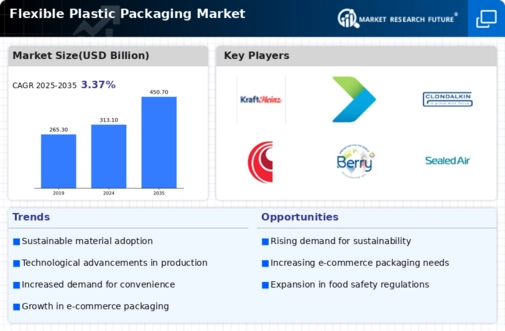
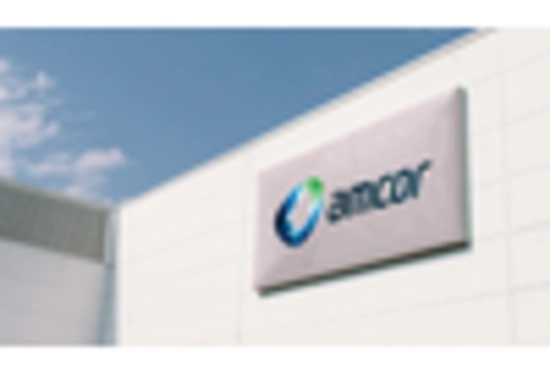
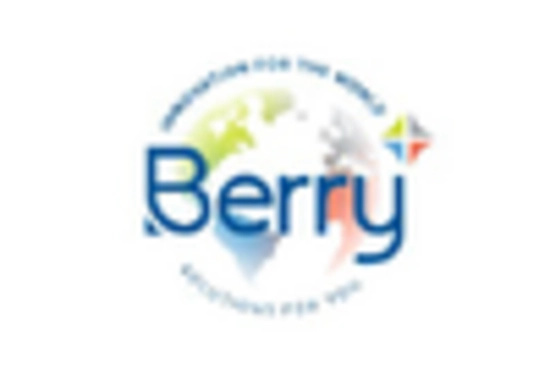
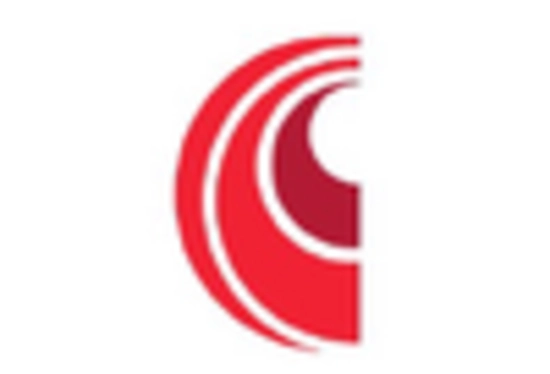

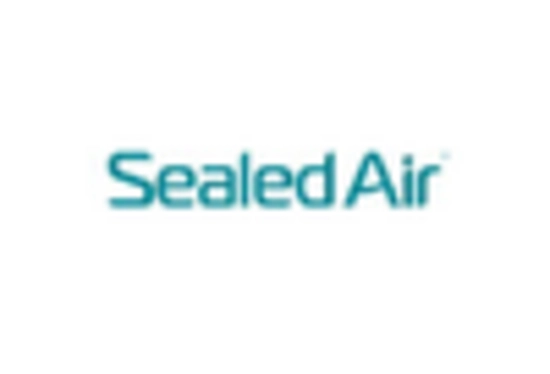
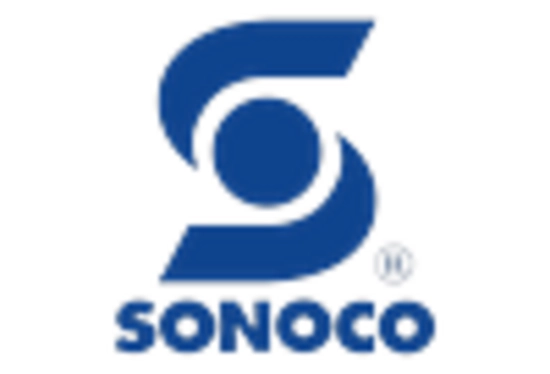

Leave a Comment